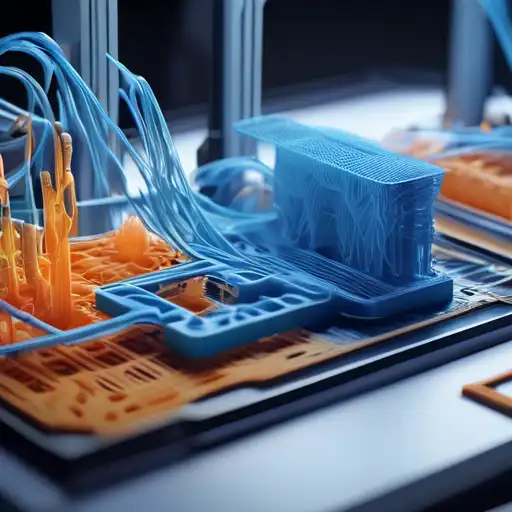The Revolutionary World of 3D Printing
3D printing, also known as additive manufacturing, is a process of creating three-dimensional objects from a digital file. This technology has been around since the 1980s but has gained significant attention in recent years due to its potential to revolutionize manufacturing, healthcare, and even the food industry.
How Does 3D Printing Work?
The process begins with a digital 3D model, which is then sliced into thin layers by specialized software. The 3D printer then builds the object layer by layer, using materials such as plastic, metal, or even biological materials. This method allows for complex shapes and structures that would be difficult or impossible to achieve with traditional manufacturing techniques.
Applications of 3D Printing
3D printing is being used in a variety of fields, including:
- Healthcare: Custom prosthetics, dental implants, and even bioprinting of tissues and organs.
- Automotive: Prototyping parts, custom tools, and even entire vehicles.
- Aerospace: Lightweight components for aircraft and spacecraft.
- Fashion: Custom jewelry, footwear, and clothing.
The Future of 3D Printing
As the technology continues to evolve, the possibilities are endless. Researchers are exploring the use of 3D printing in construction, with the potential to print entire buildings. In the medical field, the ability to print organs could solve the shortage of donor organs. The environmental impact is also significant, as 3D printing can reduce waste by using only the material needed for the object.
Challenges and Considerations
Despite its potential, 3D printing faces challenges such as high costs for industrial-grade printers, limited material options, and intellectual property concerns. However, as technology advances and becomes more accessible, these challenges are likely to be overcome.
3D printing is not just a tool for creating objects; it's a way to rethink how we design, manufacture, and distribute products. It's a key component of the fourth industrial revolution, blurring the lines between physical, digital, and biological worlds.
For more insights into the latest technological advancements, check out our technology section.
